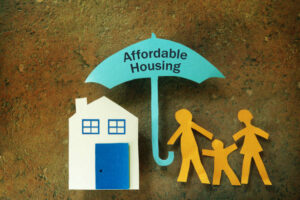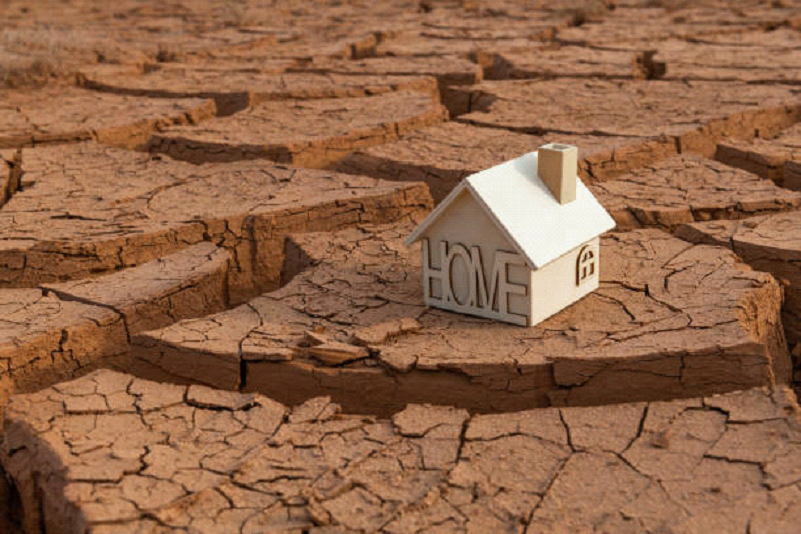Picture This…
You’re cozy in your living room, sipping coffee. Outside, news alerts ping: flooding on the rise, wildfires sweeping through forests, storms raging more fiercely. It’s unsettling—yet many of us haven’t considered how these events are quietly reshaping home insurance, sometimes in ways that feel downright unfair.
This isn’t just about premiums ticking up a few dollars. It’s about entire insurance markets shifting—and homeowners facing tougher choices. Let’s unpack how climate change is upending home insurance in the U.S.—and what you can do to stay ahead.
Why Climate Change Is Changing Home Insurance
First, let’s talk about why climate change matters to insurance. Home insurance works by spreading risk. Companies collect premiums from many homeowners and pay for the damages when disasters strike. Traditionally, insurers look at historical data—how often hurricanes hit, how likely floods are—to decide your premium and coverage.
But here’s the catch: The past is no longer a reliable guide.
Thanks to climate change, severe weather events are happening more often and are more destructive. NOAA reported that in 2023 alone, the U.S. suffered 28 separate weather disasters, each causing at least a billion dollars in damage. That’s a record.
For insurance companies, this means:
-
More claims to pay out, which pushes up their costs.
-
Higher risk in certain areas, especially those hit hardest by floods, wildfires, or hurricanes.
-
Greater uncertainty, making it tough to price policies fairly.
All of this leads to rising premiums, tougher rules, and in some cases, insurers walking away from high-risk markets altogether.

What’s Happening in the Home Insurance Market?
Here are some of the biggest shifts driven by climate change that you should know about:
1. Premiums Have Gone Through the Roof 💸
Between 2020 and 2023, average home insurance premiums climbed over 30%—about 13% even after adjusting for inflation. Across the board, insurers are passing rising costs onto customers. Here’s why:
-
Repair & reconstruction costs skyrocketing: Construction materials and labor surged ~55% from 2020–2022.
-
More frequent & severe disasters: Hurricanes, wildfires, storms—insured losses are piling up. In H1 2025, climate-related disasters in the U.S. cost $126 billion—three times the usual .
-
Tighter insurer reserves: To handle future claims, insurers are increasing capital buffers or paying for expensive reinsurance—which translates directly into premiums.
2. Harder to Find, Easier to Lose Coverage
Premiums climbing is one thing—losing coverage is another. Insurers are retreating from high-risk areas:
-
In wildfire zones like California, State Farm has stopped offering new policies, and non-renewal rates are soaring.
-
Florida, hit hard by hurricanes, lost numerous insurers—leaving homeowners scrambling.
-
“Last‑resort” state programs such as California’s FAIR Plan doubled homeowners between 2020–2024.
When only limited options remain, coverage becomes expensive—or nearly impossible to get.
3. The Fallout: A Vicious Cycle of Risk and Inequity
This isn’t just financial; it’s social and systemic:
-
Unaffordable insurance jeopardizes mortgages. Higher premiums mean some homeowners struggle to pay, even going delinquent—especially in Florida, North Carolina, Georgia.
-
Low-income & marginalized communities disproportionately hit: These areas often coincide with high-risk zones—redlined neighborhoods now paying the highest costs .
-
Rental housing gets harder too: Landlords hike rents or stop upgrading properties when their insurance costs jump, squeezing tenants.
-
Housing markets cool off: Homes in flood or wildfire zones lose value, as buyers are scared off by insurance challenges .
A cycle of climate‑driven injustice is quietly unfolding—with catastrophic consequences for many families.
4. More Policy Exclusions and Stricter Terms
To limit their exposure, insurers are excluding certain risks unless homeowners pay for extra coverage. For example, flood damage is often excluded from standard policies, requiring separate flood insurance through programs like the National Flood Insurance Program (NFIP).
Similarly, areas prone to landslides, sinkholes, or wildfires might see policies with more exclusions or higher deductibles.
5. Heavy Reliance on Climate-Driven Risk Models
Insurance companies are increasingly using advanced catastrophe models that incorporate climate science to assess risk. These models consider sea level rise, changing rainfall patterns, and wildfire likelihood to predict future losses more accurately.
While this helps insurers price risk better, it can also mean higher premiums or denial of coverage for homes near vulnerable areas like coasts or forests.

6. When Disasters Hit: Southern California’s Wildfire Surge
Consider the January 2025 California wildfires: around 200,000 people evacuated, and insured losses estimated at over $20 billion, potentially the largest fire-related payout ever.
That kind of loss doesn’t vanish—it shakes insurers, tightens underwriting, and kicks off higher rates and tighter rules statewide.
7. What Insurers Are Doing to Adapt
Insurers aren’t standing still—they’re trying new strategies:
-
Exit high-risk regions—pulling out of markets like Florida, California.
-
Restricting policy details—limiting coverage for wind, fire, or flood, hiking deductibles.
-
State-run “insurers of last resort” like FAIR plans are stepping in—though with thinner coverage and higher cost.
-
Parametric insurance is emerging—paying out based on preset triggers like wind speed. It’s faster than traditional adjuster-assisted claims.
-
Catastrophe bonds: Insurers (e.g. State Farm, Citizens in Florida) are shifting risk to investors—$18.1 billion in cat bonds sold in 2025—helping them absorb losses.
8. Public Policy & Innovative Solutions
Governments are stepping in:
-
Mortgage rules require insurance—but limited private options force reliance on expensive state solutions .
-
Building & hazard mitigation codes: Florida’s 2002 code cut windstorm loss by 72% early on.
-
Linking disaster relief to resilience is a big idea going forward—encouraging states to build strength before disasters hit .
-
Equity programs aim to support low-income and vulnerable homeowners facing rising costs.
9. How Homeowners Can Respond
Even in tough markets, you have options:
👉 Embrace Resilience & Mitigation
Strengthen your home—roof straps, fire-resistant landscaping, impact windows. These upgrades can earn you insurance discounts and protect against damage.
Colorado’s wildfire‑preparedness program, Wildfire Partners, offers inspections, guidance, and incentives—leading to actual insurance savings .
🎯 Shop Smart
Compare private insurers, FAIR plans, and parametric products. Ask about discounts for resilience upgrades.
📍 Know Your Risk – ZIP Code Matters
Understand your flood, wind, and fire risks. High-risk ZIP codes face premiums and non-renewals that are ~80% higher.
🤝 Advocate & Get Support
Connect with local homeowner groups or ask for state assistance—many programs target vulnerable homeowners.
🔍 Stay Informed
Climate impacts and insurance markets are evolving fast. Sign up for updates from trusted sources.

10. The Road Ahead: Can Insurance Be Sustainable?
The “canary in the climate coal mine” metaphor fits insurers. Their responses shape housing markets, inequality, and community resilience.
Potential paths forward include:
-
Parametric coverage for faster, transparent payouts.
-
Risk-based pricing fused with resilience incentives, not abandonment.
-
Public-private partnerships to transform FAIR plans from safety nets into true, affordable coverage.
-
Linking disaster relief to pre-emptive risk reduction, plus ensuring fair access for marginalized communities.
Which Areas Are Feeling the Heat (and the Price Hikes)?
Not all regions are affected equally. Some parts of the U.S. face bigger challenges from climate-related insurance changes:
Coastal Regions (Florida, Gulf Coast, East Coast)
Risks: Hurricanes, flooding, rising sea levels
Insurance Impact: Premiums are soaring, and many homeowners face non-renewal notices—meaning their insurer won’t continue coverage. Flood insurance is often required separately, adding to costs.
Western States (California, Oregon, Colorado)
Risks: Wildfires, drought
Insurance Impact: Coverage is becoming scarcer, deductibles are climbing, and policies are harder to get. Some homeowners struggle to find any insurer willing to take them on.
Midwest and South (Texas, Kentucky, Missouri)
Risks: Tornadoes, severe storms, flash floods
Insurance Impact: Rate increases and new requirements for homes to be built or retrofitted to better withstand storms are becoming more common.
Final Thoughts: Climate Change Is a Wake-Up Call for Homeowners
Climate change is reshaping home insurance—making it more expensive, harder to find, and often less inclusive. But there are cracks of opportunity:
-
Make your home climate-resilient and shop wisely.
-
Know your risks—and your rights.
-
Push for policy change that balances affordability, access, and sustainability.
Above all, stay proactive. The climate future is coming—your insurance is one powerful way to prepare.
Quick Checklist for Homeowners
-
Identify your climate risk (flood, wildfire, wind)
-
Get preventive upgrades (roof, landscaping, shutters)
-
Compare private, FAIR plans, and parametric insurance
-
Ask about local/state discount programs
-
Keep records: mitigation measures, risk data, insurer communications
-
Advocate: let regulators know about affordability challenges
-
Track new market shifts—resilience programs and insurance changes
Need Help Navigating Insurance in a High-Risk Area?
If you live in a climate-vulnerable region or just want to be sure you’re covered, reach out to a licensed local insurance agent who knows the area’s risks. You can also visit FloodSmart.gov to assess your flood risk and find information on flood insurance.





